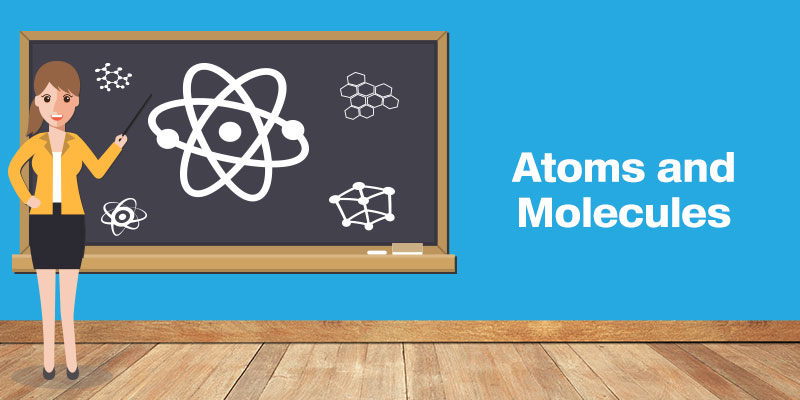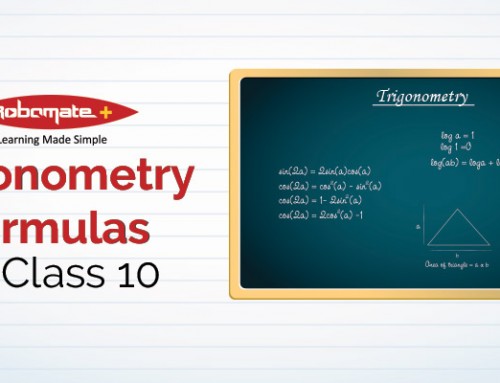General Question: Illustrate the relationship between a mole, Avogadro’s number and Mass.

Q1. A reaction is taking place wherein, 5g of sodium carbonate reacts with 7.2 gm of ethanoic acid. The products are 4.2g carbon dioxide, 3g water and 5g sodium ethanoate. Prove how these observations are in coherence with the law of mass conservation.
Ans.
Sodium carbonate + ethanoic acid water+ carbon dioxide + Sodium ethanoate
5g 7.2g 3g 4.2g 5g
LHS = RHS
12.2g = 12.2g
This observation thus shows that during a chemical reaction, mass of reactant = mass of product.
Q2.Hydrogen reacts with oxygen in the ratio 1:8 by mass to form water. How much oxygen is required to completely react with 4g of hydrogen?
Ans.
We know hydrogen and water mix in the ratio 1: 8.
Thus, 1: 8 = 4: x (where x is the amount of oxygen)
x =8 * 4
= 32g
Therefore, 32g of oxygen would be required to completed react with 4g of hydrogen.
Q3. Which postulate of Dalton’s Atomic theory is the result of the law of conservation of mass?
Ans.
The postulate of Dalton’s Atomic theory which is a result of the law of conservation of mass is, “Atoms can neither be created nor destroyed”.
Q4. Which postulate of Dalton’s Atomic theory can explain the law of definite proportions?
Ans.
The postulate which can explain the law of definite proportions is that the relative number and the kinds of atoms are constant in a given compound.
Q5. What is an atomic mass unit?
Ans.
An atomic mass unit is a unit of mass used to express weights of atoms and molecules where one atomic mass is equal to 1/12th the mass of one carbon-12 atom.
Q6. Why aren’t atoms visible to a naked eye?
Ans.
Firstly, atoms are very very minute, measuring in nanometers. Secondly, except for atoms of noble gasses, they do not exist independently. For these basic reasons, we cannot see an atom with our naked eye.
Q7.Write the formulae for the following:
- Carbon dioxide
- Calcium hydroxide
- Ammonium chloride
- Aluminum chloride
Ans.
Carbon dioxide-CO2, Calcium hydroxide- Ca(OH)2, Ammonium Chloride – NH4CL, Aluminum Chloride – AlCl3
Q8.What does chemical formula mean?
Ans.
The symbolic representation of a chemical compound is called its chemical formulae. E.g. chemical formulae of salt is NaCl.
Q9. Find the number of atoms the following possess: – (i)H2O molecule (ii)H2S molecule
Ans.
H2O3 atoms present
H2S 3 atoms present.
Q10.Find out the molecular masses ofCO2, O2, H2, CL2, NH3, C2 H2, CH3 OH.
Ans.
H2 = 1 x 2 = 2u
O2= 16 x 2 =32U
CO2=1 x 12 + 2 x 16 =44U
CL2= 35.5 x 2= 71u
NH3 = 1 x 14 + 3 x 1 =17u
C2H2 = 2 x 12 + 2 x 1 =26u
CH3OH =12 + 3 x 1 + 16 + 1 = 32u
Q11.Work out the formula unit masses of K2CO3, ZnO, Na2O.
(Atomic masses of Zn=65u, Na= 23u, K=39u, C=12u and O= 16u)
Ans.
ZnO= 65u + 16u = 81u
Na2O= (23u x 2) + 16u = 46u + 16u = 62u
K2CO3 = (39u x 2) + 12u + 16u x 3=138u
Q12. What is the mass of 1 carbon atom, if one mole of carbon atoms weigh 12gm?
Ans.
1 mole of carbon atoms, 6.022 x 1023 = 12g
Therefore, mass of 1 carbon atom = 12/6.022 x 1023
= 1.99 x 10-23g
Q13.Out of 100g of sodium and 100g of iron which one is heavier?
(Atomic mass of Na=23u, Fe= 56u)
- 23g of Na = 6.022 x 1023atoms
100g Na = x1023 = 2.6182 x 1024atoms
56g of Fe = 6.022 x 1023 atoms
100g of Fe=100 x (6.022/56) x 1023= 1.057 x 1024atoms
Thus, it is evident from the above calculations that 100g of Na has more atoms.
Q14. A 0.20g compound of oxygen and boron was found to contain 0.080g of boron and 0.12.Calculate the percentage composition of the compound by weight.
Ans.
Compound Boron + Oxygen
0.20 0.080 0.12
Percentage composition of boron:
0.20g 0.040g
100 x (0.080/0.20)=40%
Percentage composition of oxygen:
100 x (0.12/0.20)= 60%
Q15. 3g of carbon is burnt in 8g of oxygen, 11g of carbon dioxide is the by-product. What mass of CO2 is formed when 3g of carbon is burnt in 40g of oxygen? Which law of chemical combination does the answer follow?
Ans.
The chemical reaction of carbon burning in oxygen is:
C + O CO2
1 mole 1 mole 44g
12g 32g
It is given that 3g of carbon requires 8g gram of oxygen to produce 11g of carbon-dioxide. Thus when 3g of carbon burns in 40g of oxygen, we still get 11g of carbon dioxide with 40-8= 32g of oxygen remaining. The answer follows the law of constant proportion.
Q16.What do you understand by polyatomic ions?
Ans.
Polyatomic ions are ions that contain more than one atom but they behave as a single unit e.g. CO3 2- , H2PO4–.
Q17. What is the chemical formula of the following compounds?
Methane
Vinegar, Sodium Thiosulphate
Calcium Carbonate
Potassium Hydroxide
Magnesium chloride.
Ans.
Methane- CH4
Vinegar –CH3COOH
Sodium Thiosulphate – Na2S2O3.5H2O
Calcium Carbonate – CaCO3
Potassium Hydroxide – KOH
Magnesium Chloride –MgCl2
Q18. What are the names of the elements present in the following compounds:
Potash Alum, Quick lime, Plaster of Paris, Common Salt and Baking powder
Ans.
Potash alum – Potassium Aluminum Sulphate
Elements –Potassium, Aluminum, Sulphur, Oxygen and Hydrogen
Quick lime – Calcium oxide
Elements- Calcium and oxygen
Plaster of Paris – Calcium Sulphate
Elements – Calcium, Sulphur, Oxygen and Hydrogen
Common Salt – Sodium Chloride
Elements –Sodium and chlorine
Baking Powder – Sodium Hydrogen Carbonate
Elements- Sodium, Hydrogen, Carbon and Oxygen.
Q19. Find the molar mass of the following compounds:
Hydrochloric Acid (Hcl)
Ammonia(NH3)
Nitric Acid (HNO3)
Acetic Acid (CH3COOH)
Acetone(C3H6O)
Ans.
HCL = 1 + 35.5 = 36.5g
NH3= 14 + 1 x 3 =17g
HNO3 = 1 + 14 + 16 x 3 = 63g
CH3COOH = 12 + 3 x 1 + 12 + 16 x 2 + 1 =60g
C3H6O = 12 x 3 + 6 x 1 + 16 = 58g
Q20. Find the mass of:
- 1 mole of oxygen
- 5 moles of chlorine atoms
- 10 moles of ammonia
Ans.
1 mole of oxygen = 16g
5 mole of chlorine atoms = 5 x 35.5= 177.5g
1 mole of ammonia(NH3) = 14 + 3 x 1 =17g
Thus, 10 moles of ammonia = 10 x 17 = 170g.
Q21. Convert the given mass into mole:
- 10g of chlorine gas.
- 12g of Carbon dioxide.
- 10 gram of oxygen gas.
Ans.
a) Given mass of chlorine gas = 10g.
Molar mass of chlorine gas = 71g.
Thus, mole of 10g of chlorine gas = 10/71=0.1408 moles.
b) Given mass of CO2 = 12g.
Molar mass of CO2 = 12 + 16 x 2 =44g.
Thus, mole 12g of CO2 = 12/44 =0.272 moles.
c) Given mass of O2 =10g.
Molar mass of O2 = 16 x 2 =32g.
Thus, mole of 10g of O2 = 10/32 =0.3125 moles.
Q22. Find the mass of:
a) 2 moles of water molecules.
b) 5 moles of carbon dioxide molecules.
Ans.
a) Mole of water molecules = 0.2
Molar mass of H2O =1 x 2 + 16 =18g
Mass of 0.2 moles of H2O =18 x 0.2 =3.6g
b) Mole of CO2 molecule = 0.5.
Molar mass of CO2 =12 + 16 x 2 =44g.
Mass of 0.5 moles of CO2 = 0.5 x 44 =22g.
Q23. What is the number of molecules of Sulphur (S8) present in 32g of solid sulphur?
Ans.
Molar mass of sulfur = 256g = 6.022 x 1023molecule
Given mass of sulfur = 32g
Therefore, the number of molecules = * 1023
=7.75 x 1022molecules.
Q24.Find the number of aluminum ions present in 0.046g of aluminum oxide. (For an element, the mass of its ion and atom are the same)
Ans.
Molar mass of aluminum oxide, Al2O3 = (2 x 27) + (3 x 16) = 102g
Now,
102g of Al2O3 contains = 2 x 6.022 x 1023 aluminum ions
Therefore,
0.046 g Al2O3 contains = * 1023
= 5.432 x 1020 Al3+ ions.
Q25. Multiple choice questions:
Choose the option:
1. The atomicity H2SO4 is:
(a)12 (b)7
(c)19 (d)8
2. The chemical formula for acetic acid is:
(a)CH3COOH (b)CaCl2
(c)CaO (d)CaCO3
3. The symbol for gold is:
(a)Cd (b)Hg
(c)Gd (d)Au
4. Noble gas molecules have:
(a) diatomic (b)triatomic
(c) monoatomic (d)none of the above
5. The valency of oxygen in a water molecule is:
(a)1 (b)2
(c)3 (d)5
6. The molar mass of Ethyne, C2H2 is:
(a) 26g (b) 21g
(c) 25g (d) 15g
7. How many moles of oxygen are present in 3.2g of oxygen atoms?
(a) 0.2moles (b) 0.9 moles
(c) 1.2 moles (d) 1 moles.
8.Which among the following is not proposed by Dalton in his atomic theory?
(a) Atoms cannot be divided further
(b)Only atoms of the same elements can combine to form compounds.
(c) Atoms of different elements have different sizes, masses and chemical properties.
(d) Atoms can neither be created nor destroyed.
9.Pick the wrong one out:
(a) 1 mole of hydrogen = 1g
(b)1 mole of oxygen = 32g
(c) 1 mole of Carbon =18g
(d)1 mole of chlorine = 35.5g
10. From the following compounds which one has a molecular mass of 106.
(a) Na2CO3 (b)H2SO4
(c)CaCl (d)none of the above
Ans. 1-(b) , 2- (a) , 3- (d) , 4 –(c) , 5- (b) , 6- (a), 7 –(a) , 8 – (b) ,9- (c) , 10- (a).
Q26.State the law of mass conservation.
Ans.
According to this law, mass can neither be created nor destroyed in a chemical reaction or a physical transformation.
Q27.What do you understand by the law of constant proportion?
Ans.
According to the Law of constant proportion, a chemical compound always has its compounding elements in definite proportion by mass, irrespective of the source and the type of chemical reaction.
Q28.Who was responsible for coining the term atom?
Ans.
In modern science, John Dalton widely used it and he can be said to be responsible for coining it, but a more factually correct answer would be a Greek philosopher who goes by the name of Lucretius.
Q29.Define atom.
Ans.
Atom is the smallest particle of matter which can take part in a chemical reaction.
Q30.What is a molecule?
Ans.
A molecule is a group of atoms bonded together which represents the most fundamental unit of a chemical compound capable of taking part in a chemical reaction.
Q31.What is atomicity?
Ans.
Atomicity is the number of atoms in a molecule.
Q32.Define atomic mass unit.
Ans.
The Atomic mass unit is the sum of the atomic masses of all the atoms in a molecule.
Q32.What is the atomicity of oxygen and phosphorous?
Ans.
Atomicity of oxygen, O2= 2 and atomicity of phosphorous, P4= 4.
Q33. Define ion.
Ans.
An ion is an atom or a molecule with an electric charge (+ve or -ve), caused by gain or loss of a single or multiple electrons.
Q34. Provide a difference between cations and anions, along with an example for each.
Ans.
Cations are positively charged ions, e.g. Fe2+ whereas, anions are negatively charged ions, e.g. F–
Q35.Define Avogadro’s constant.
Ans.
Avogadro’s Constant (6.022 x 1023) is the number of atoms of an element present in one mole of that element.
Q36.Calculate the molecular mass of glucose, C 6H12 O6.
Ans.
Molecular mass of C6H12 O6 = (12 x 6) + 12 + (16 x 6)
= 180u.
Q37.What is the unit to measure the size of an atom, and what is the size of a hydrogen atom?
Ans.
An atom’s size is measured in nanometers and a hydrogen atom is 0.1 nm.
Q38. What does IUPAC stand for? State any one of its roles.
Ans.
IUPAC stands for the International Union of Pure and Applied Chemistry. One of its roles is to approve the naming of elements
Q39. What is the Latin name for the following elements: gold, silver, sodium, potassium?
Ans.
Gold – Aurum, Silver- Argentum, Sodium – Natrium, Potassium – Kalium.
Q40. What is the ratio by mass of the constituent elements in CO2, NH3 and H2O?
Ans.
CO2 by mass of combining elements 12:32 3:8 (C:O)
NH3 by mass of combining elements 14:314:3 (N:H)
H2O by mass of combining elements 2:16 1:8 (H:O)
Q41.What is valency? Give the valency of the following elements: beryllium, neon, magnesium, hydrogen, chlorine.
Ans.
Valency is the number of electrons an atom can use to combine with other atoms or in other words, it is the combining power of an atom.
Beryllium-2, neon-0, magnesium-2, hydrogen-1, chlorine-2.
Q42.What is a polyatomic ion?
Ans.
Polyatomic ions are composed of two or more atoms acting as a single unit. E.g. NH4+
Q43.What are the chemical formulae for: Acetone, copper nitrate and aluminum hydroxide.
Ans.
Acetone- (CH3)2CO
Copper Nitrate- Cu(NO3)
Aluminum Hydroxide – Al(OH)3
Q44.Calculate the number of moles in:
(i)36g of H2O
(ii)69g of Na
Ans.
(i) Molar mass of H2O=2 x 1 + 16 =18g
Given mass of H2O =36g
Therefore, number of moles in 36g of H2O = 36/18 =2 moles
(ii) Molar mass of Na = 23g
Given mass of Na =69g
Therefore, number of moles in 69g of Na = 69/23 =3 moles.
Q45.What are the rules for writing the symbol of an element?
Ans.
Firstly, the symbol has to be IUPAC approved.
The symbols are the first one or two letters of that element in English, Latin, German or Greek. E.g. He for helium, O2 for oxygen.
And, the first letter of the symbol has to be in upper case and the second letter has to be in lower case e.g. Na , Cl, etc.
Q46. What do you understand from relative atomic and relative molecular mass?
Ans.Relative atomic mass is the ratio of the mass of one atom to the 1/12th mass of a carbon-12 atom.
Relative molecular mass is the ratio of the mass of one molecule of an element to 1/12th of the mass of a carbon-12 atom.
Q47. H2O is the formula for water. What information do you get from this formula?
Ans.
- H2O represents water
- H2O is a single molecule of water
- H2O is a single mole of water. Thus, it contains 6.022 x 1023 molecules of water.
- H2O contains 2 atoms of hydrogen and 1 atom of oxygen.
- H2O has a molar mass of 18g
Q48.Differentiate between an atom and an Ion.
Ans.
| Atoms | Ions |
| Neutral charge | Positively or Negatively charged |
| Number of electrons and protons is equal | Number of protons and electrons isn’t equal |
Q48.What is the formula unit mass of CaCl2 and NaCl.
(Na = 23, Cl=35.5, Ca=40)
Ans.
Formula Unit Mass of NaCl = 23 + 35.5 = 58.5u
Formula Unit Mass of CaCl2= 40+(2 x 35.5)= 111u.
Q49. The ratio by mass of hydrogen to oxygen in a water molecule is 1: 8. Calculate the ratio of the number of atoms in a water molecule.
Ans.
| Element | Ratio by mass | Atomic mass | Mass Ratio | Simplest ratio | ||
| Atomic mass | ||||||
| H | 1 | 1 | 1/1 =1 | 2 | ||
| O | 8 | 16 | 8/16=1/2 | 1 | ||
Thus, the ratio of the number of atoms in a water molecule is H: O = 2: 1.
Q50. Write the chemical formula for the following compounds:
(a) Zinc carbonate
(b) Copper phosphate
(c) Aluminum carbonate
(d) Aluminum hydroxide
(e) Magnesium bicarbonate
(f) Calcium sulphide
Ans.
(a)Zinc Carbonate
Zn2+ CO32-
Formula = ZnCO3
(b)Copper Phosphate
Cu2+ PO43-
Formula = Cu3(PO4)2
(c)Aluminum Carbonate
Al3+ CO32-
Formula= Al2(CO3)3
(d)Aluminum Hydroxide
Al3+ OH–
Formula = Al(OH)3
(e)Magnesium Bicarbonate
Mg2+ HCO3–
Formula = Mg(HCO3)2
(f)Calcium Sulphide
Ca2+ S2-
Formula = CaS
Q51.Write the atomicity of the following compounds:
- Al2(SO4)3
- Mg(HCO3)2
- ZnCO3
- HCL
- H2O
- H2SO4
Ans.
- Al2(SO4)3 = 17
- Mg(HCO3)2 = 11
- ZnCO3 = 5
- HCL=2
- H2O = 3
- H2SO4=7
Q52. What is the difference between 2O, O2 and O3.
Ans.
2O represents 2 atoms of oxygen, and it is not possible for it to exist independently.
O2 represents an oxygen molecule which has two constituent oxygen atoms.
O3 represents a single ozone molecule and it does exist independently.
Q53. (a)Explain how atoms exist.
(b)What do you understand by atomicity?
(c) Explain polyatomic ions.
Ans.
(a) Atoms of most elements don’t exist independently they exist as molecules, for molecules are more stable. However, atoms of inert gasses are chemically unreactive and they exist independently. E.g. helium.
(b) Atomicity is the number of atoms in a molecule. E.g. The atomicity of H2O = 3.
(c) A polyatomic ion is an ion composed of multiple atoms acting as a single charged unit.
Q54. Find out
(1) the mass of a single oxygen atom
(2) the mass of a single oxygen molecule
(3) the mass of a mole of oxygen gas
(4) the mass of an oxygen ion
(5) the number of atoms in a mole of an oxygen molecule.
Ans.
(1) Mass of a single oxygen atom
1 mole of oxygen atom = 16gm =6.022 x 1023 atoms
Therefore, Mass of one oxygen atom = 16/6.022 x 1023 = 2.65 x 10-23 gm
(2) Mass of a single oxygen atom
1 molecule oxygen = O2 =2 x 16 = 32u
(3) Mass of a mole of oxygen gas
1 mole of oxygen = O2 = 2 x 16 =32u
(4) Mass of an oxygen ion = mass of an oxygen atom (since electrons have negligible mass)
(5) Number of atoms in a mole of oxygen molecule
We know, 1 mole of oxygen molecule, O2 = 6.022 x 1023 molecules.
1 molecule of O2= 2 atoms
Therefore in a mole of O2 , there are =6.022 x 1023 x 2 atoms
= 1.022 x 1024 atoms.
Q55. Explain atomic mass and gram atomic mass. Why does mass have different expressions viz, ‘u’ and ‘gm’?
Ans.
Atomic mass is the unit in which the mass of an atom is expressed, where one atomic mass unit is 1/12ththe mass of a carbon-12 atom.
Gram atomic mass is the atomic mass of an element expressed in grams.
The mass of an atom or a molecule is expressed in ‘u’, whereas, the molar mass is expressed in ‘gm’.
Q56. Define a mole. Give the importance of the mole.
Ans.
One mole of atoms, molecules, or particles is that amount of the particle(atoms, molecules and ions) whose mass is equal to that particle’s atomic or molecular mass in grams. 1 mole = 6.022 x 1023 particles of that substance.
Importance of a mole:-
- Atoms and molecules are very small. So it gets bothersome weighing them in grams and trying to count them. Mole concept, however, allows us to count atoms and molecules by weighing macroscopic amounts of materials.
- It gives us a universally accepted standard of mass.
- It provides a standard for reaction stoichiometry.
Q57. A gold ring has 90% gold and 10% copper.
(a) How many atoms are there in a gram of gold
(b) What is the ratio of gold to copper in this jewelry?
Ans.
(a) 1 gram of gold contains 90/100 = 0.9 grams of gold
Now, number of moles of gold = Mass of gold/Atomic mass of gold
= 0.9/197 =0.0046
Therefore,0.0046 moles of gold will contain= 0.0046 x 6.022 x 1023
= 2.77 X 1021 atoms.
(b)Ratio of gold : copper = 9 : 1












